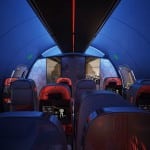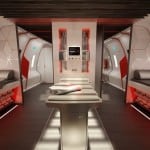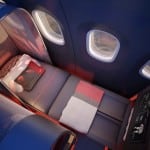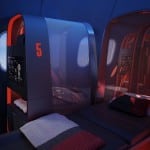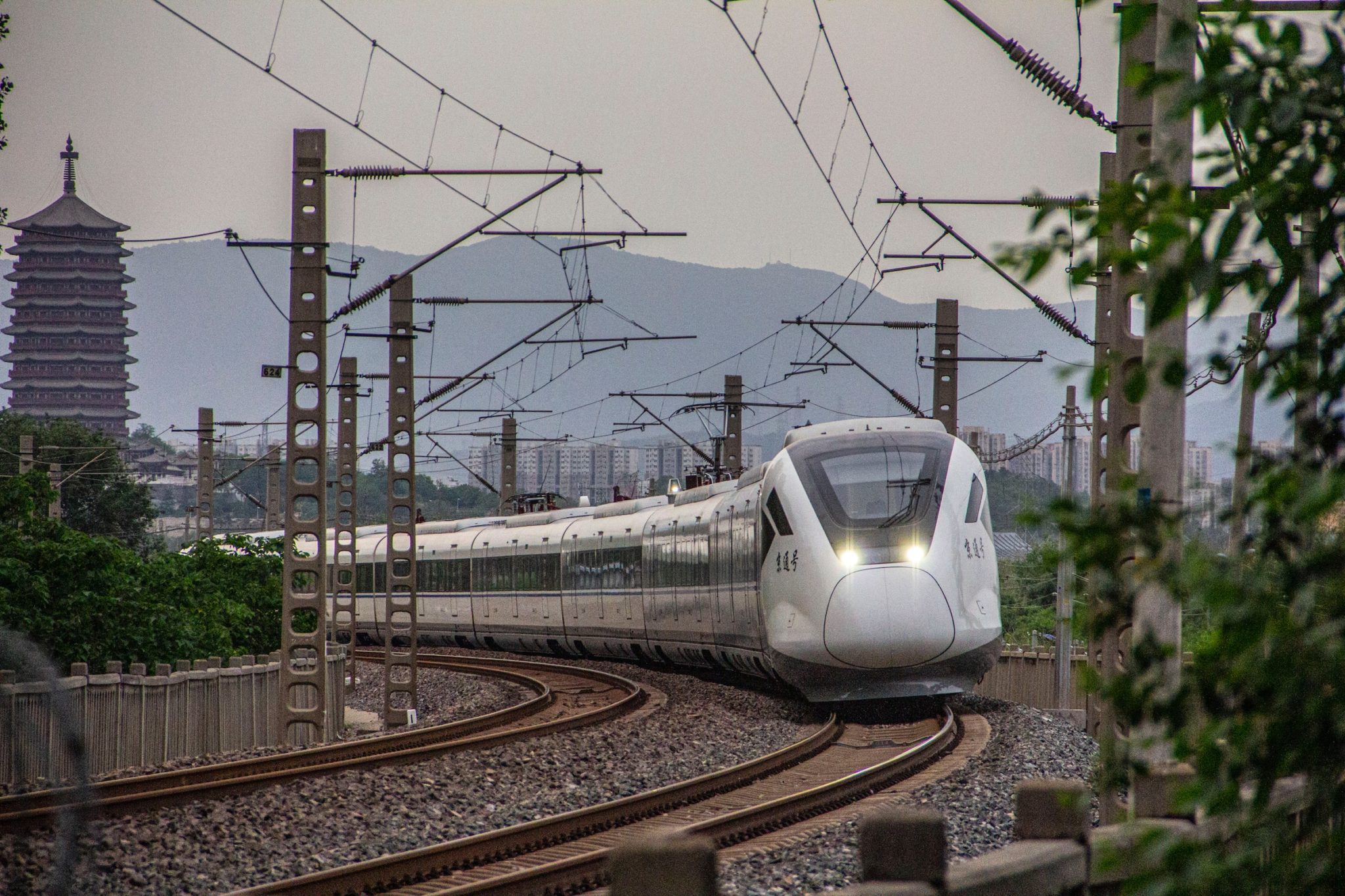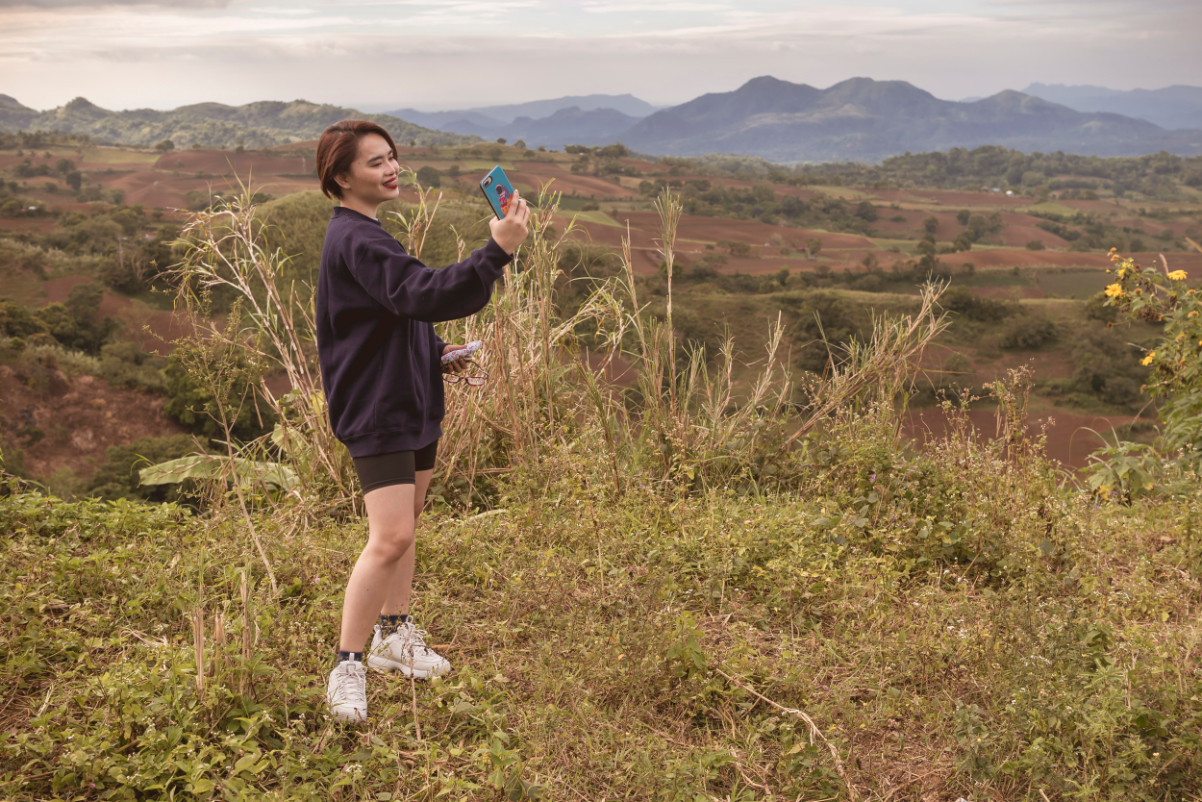Nike Has a New Plane That Could Make Everyone a Healthier Traveler
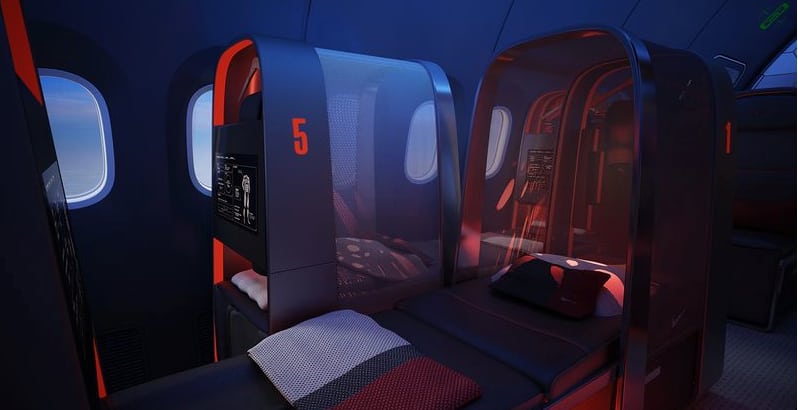
Skift Take
- TEAGUE/NIKE aircraft cabin concept, TEAGUE
- TEAGUE/NIKE aircraft cabin concept, TEAGUE
- TEAGUE/NIKE aircraft cabin concept, TEAGUE
- TEAGUE/NIKE aircraft cabin concept, TEAGUE
- TEAGUE/NIKE aircraft cabin concept, TEAGUE
- TEAGUE/NIKE aircraft cabin concept, TEAGUE
World-leading design agency TEAGUE, Seattle, has announced its new Nike plane concept.
This collaboration with Nike develops a specialized flying experience for athletes, focused on a healthy alternative to the traditional charter aircraft on which many sports teams fly today. Though designed to cater to the needs of athletes, the TEAGUE/Nike plane represents a step forward in the future of the flight experience for all passengers, aligned with the vision of industry experts.
To develop the aircraft design, TEAGUE interviewed team physicians, coaches, operations staff and sleep specialists working with collegiate and professional teams. The agency also collaborated with designers and training experts at Nike to keep the program in-line with key health and training objectives not addressed by traditional commercial charter aircraft.
The aircraft is divided into four areas which affect player’s performance.
There is a Recovery section intended to equalize the negative effects of travel on the mind and body, and bring the training room to 40,000 feet through in-flight biometrics and analysis, to accelerate injury diagnosis and treatment.
The Circulation section will foster natural mobility and builds-in equipment that ensures optimal circulation and promotes healing.
The Sleep section is designed for ideal sleeping conditions, and employs sleep strategies so that teams can maximize their physical readiness.
The Thinking space is dedicated for key mental activities, especially game film study—enabling in-transit film review before and after the game.
The aircraft therefore breaks away from the traditional structure of aircraft cabin design, building what the professional sports team needs most instead: a center of athletic excellence, which can fly athletes where they need to be in comfort — without breaking the training routine.
The technologies and methodologies developed for this special program, could transfer over to elements which could benefit general commercial flights. TEAGUE and Nike have analyzed the physical and mental impact of the in-flight experience, the effect of long flights and cramped cabin conditions.
TEAGUE explains: “Factors we pay particular attention to include foot traffic, noise and light disturbances, climate control, privacy, and social habits.” By looking for solutions to these factors, TEAGUE builds up the aviation design knowledge base, which can later be applied to improvements in the commercial aircraft cabin.
The Dreamliner interior, for example, considers a number of health factors with improvements arising from similar studies. The Nike plane also introduces new materials and structures, which, once certified, can be used for any aircraft program.
This partnership between a brand and a passenger profile which is the target customer of that brand will shape our travel experience in future. Industry visionaries believe co-branding is a developing trend which will grow over the next 20 years.
Chris Nurko, Global Chairman of FutureBrand, has said that a co-branded aircraft cabin experience will define tomorrow’s travel and that the industry is thinking in that direction. Ingo Wuggetzer, VP of cabin innovation at Airbus has made similar observations. Devin Liddell, Principal Brand Strategist at TEAGUE sees great opportunities for co-branding, telling Skift he envisions “a holistic branded journey” through brand cross-over collaboration between airlines, hotels and consumer products.
The Future of the Co-Branded Cabin
A co-branded cabin builds a stronger connection with passengers who identify with that brand. It also gives airlines an additional opportunity to monetize the inflight product. Airlines currently fund the high costs of all their interiors equipment, and our cabins reflect that investment—relying only on passenger revenue. For a co-branded cabin, the costs are shared between the airline and the brand sponsor. This encourages greater customization, and can result in a better flying experience.
Expect co-branding to make its way into the cabin interiors in trim and finish, and in soft products like in-flight amenities and dining. It could ultimately shape the cabin entirely, some industry experts believe, with the cabin divided according to lifestyle needs of passengers, not according to class. These lifestyle cabins are ideal co-branding opportunities. We may not all fly the Nike plane of tomorrow, but we might fly our favorite airline with interiors designed by our favorite fashion brand, and catering provided by our favorite restaurant chain.
